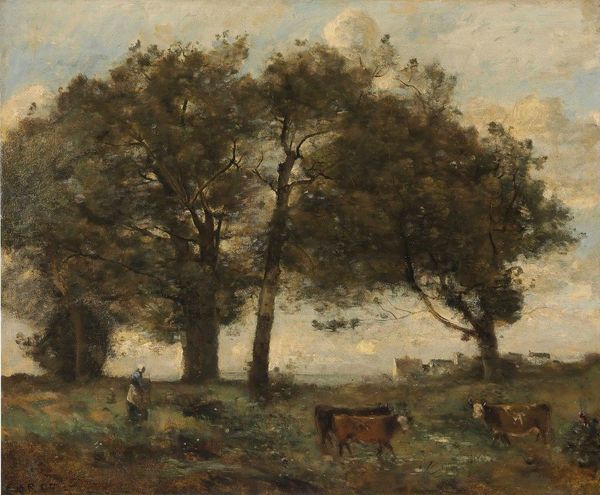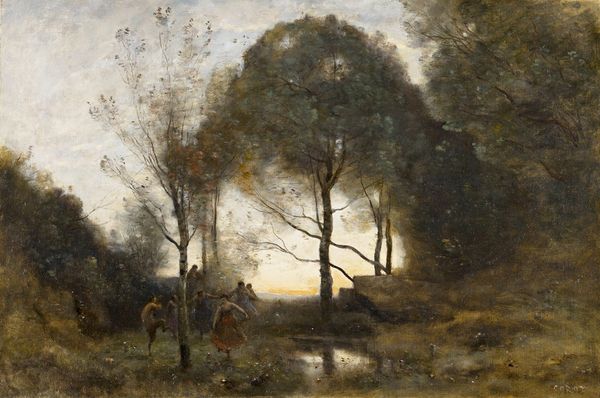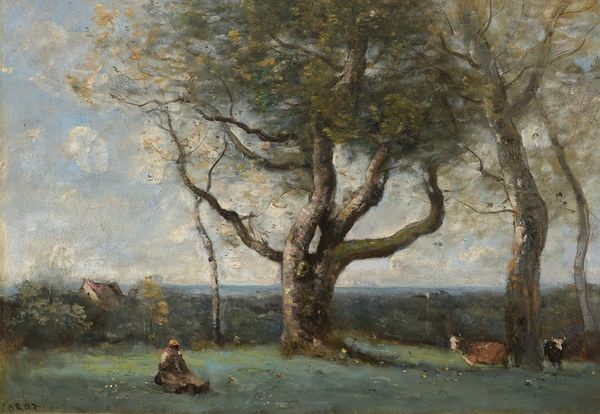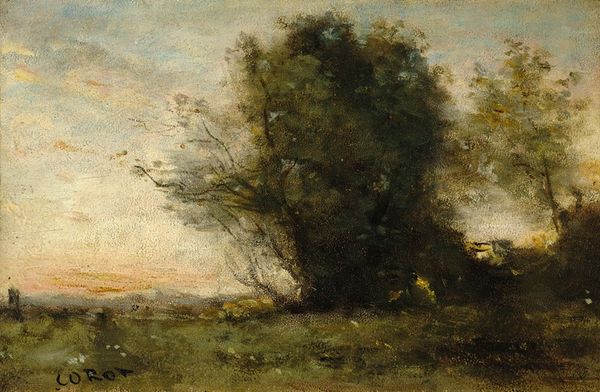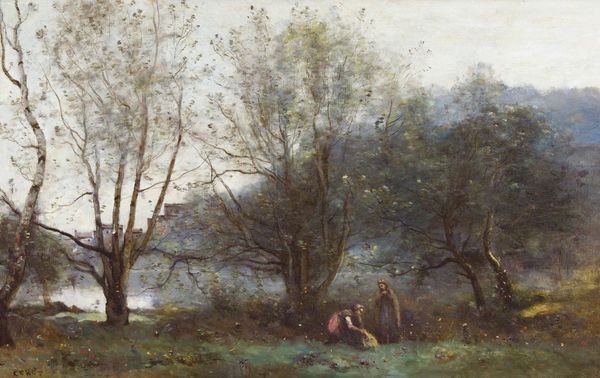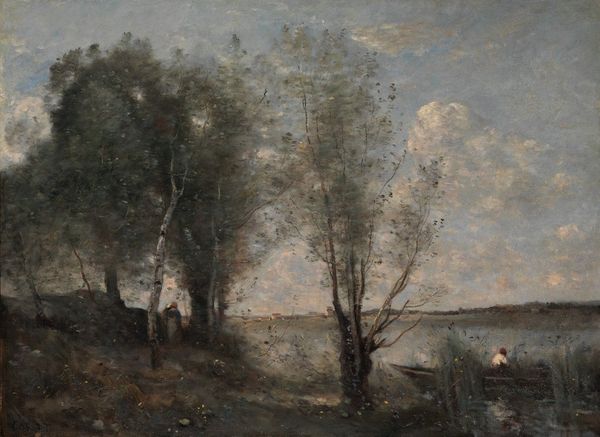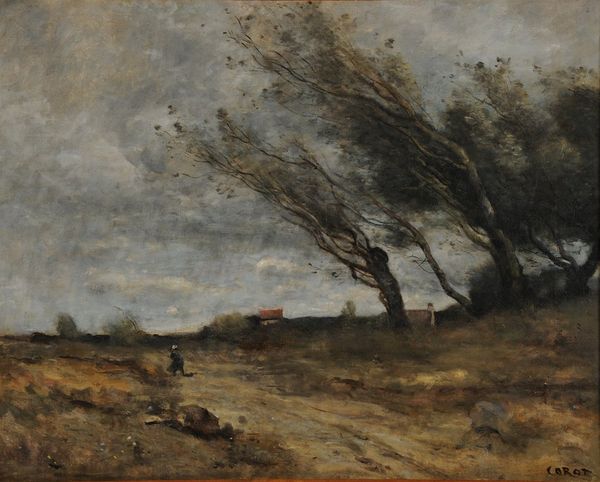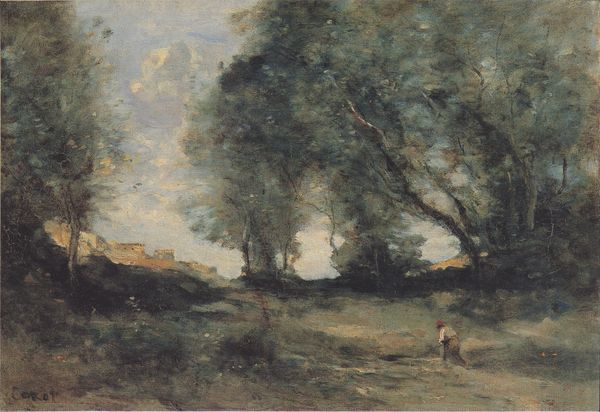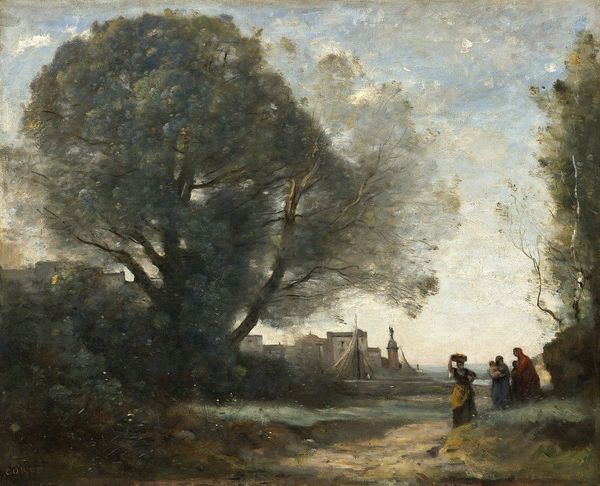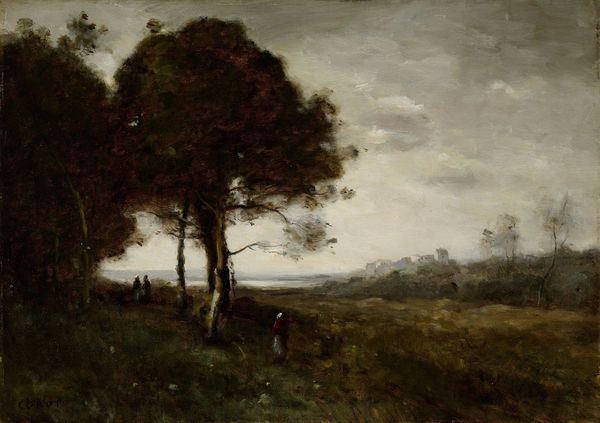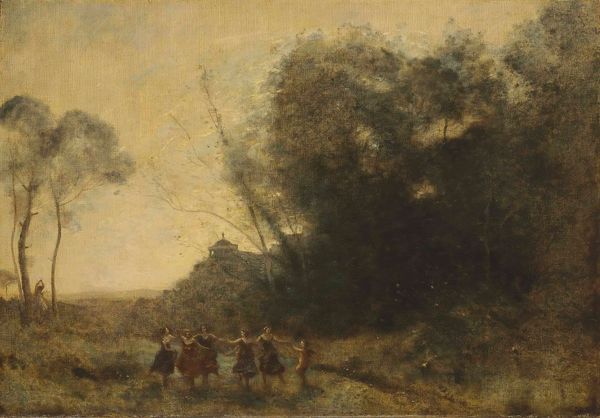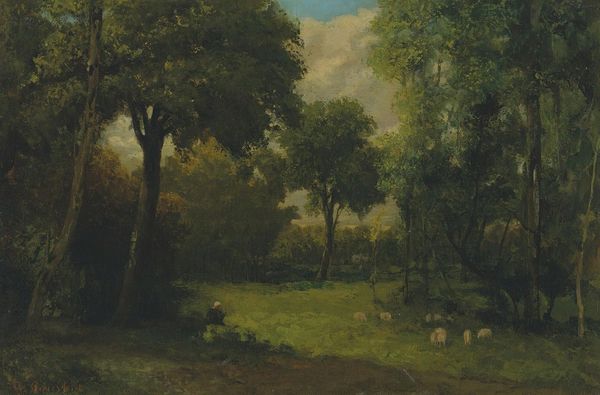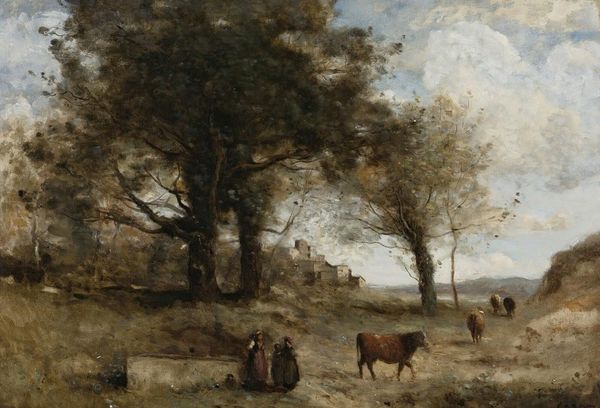
painting, plein-air, oil-paint
#
painting
#
impressionism
#
plein-air
#
oil-paint
#
landscape
#
oil painting
#
romanticism
#
realism
Copyright: Public Domain: Artvee
Editor: Here we have "La Rencontre Au Bord Du Chemin," attributed to Camille Corot, made using oil paints, evocative of the Impressionist style. The landscape is muted, and a few figures gather near the roadside. It almost looks unfinished. What do you see when you look at this piece? Curator: For me, this image provides access to the material conditions of Corot's art making. You're right; there’s a sense of incompleteness here, of the artist grappling with the very act of representation "en plein air". It highlights a tension, doesn't it? Between the romantic ideal of landscape and the reality of its production, the physicality of applying paint to canvas, outside. Editor: So, it’s not just about the landscape *itself*, but about Corot's *labor* of creating that landscape? Curator: Exactly. Think about the physical act. The artist lugging his materials – paints, canvas, easel – out into the fields. What does that imply about Corot’s place in the society of the time? Consider how industrial advancements made paint more accessible in tubes; it allowed for new types of art practices like "en plein air" which ultimately informed movements like Impressionism. This painting embodies this transition. Editor: I see. So the painting becomes an artifact, reflecting the industrial and material changes of the era, not just an idealized nature scene. I guess that’s something you miss if you only consider the picturesque qualities of the artwork. Curator: Precisely. This helps bridge the gap between art and craft; a painter creating art under such open-air conditions becomes part of a social and industrial process. Viewing it in this light opens our eyes to other social layers informing how art history is constructed. Editor: That's a completely different way of approaching this than I ever would have considered. I’m seeing this less as a static image and more as a record of a specific artistic labor. Thanks for that fresh insight.
Comments
No comments
Be the first to comment and join the conversation on the ultimate creative platform.
